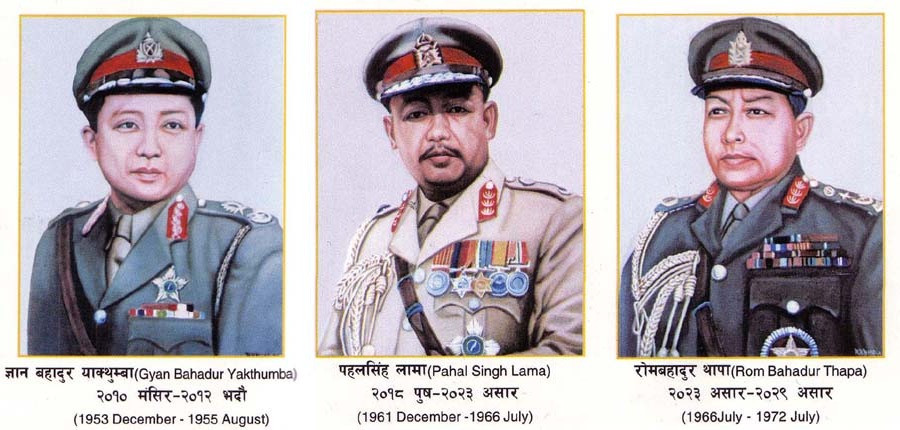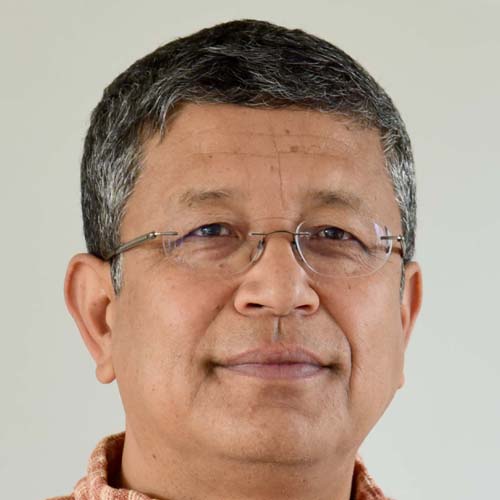Columns
Forgotten heroes
Despite its contribution to the anti-Rana struggle, the Mukti Sena still lives in the shadows.
Deepak Thapa
This column is inspired by a recent article by Jagat Nepal in Kantipur on Gyan Bahadur Yakthumba, one of the commanders of the Mukti Sena, the fighting force in the Nepali Congress-led insurrection in 1950-51 that delivered us from the autocratic Rana oligarchy. Written in a somewhat hagiographic tone, the piece on Yakthumba nevertheless brought to light many aspects of a figure who remains relatively unknown. Starting with an action-packed account of his leading the assault on the Badahakim’s residence in Biratnagar, it details his unceremonious sacking by king Mahendra from his position of inspector general of police (IGP), a role he had assumed at the young age of 33 after the Mukti Sena transformed into the Nepal Police.
Despite its contribution to the anti-Rana struggle and to the modernisation of the Nepal Police, the story of the Mukti Sena still lives in the shadows. It is a fascinating one though. Consisting of Nepalis who had served mainly in the British Indian military and inspired to take up arms against a regime that many saw as responsible for their or their family’s having to leave home in the first place, it nowadays finds mention mainly in the context of the many Mukti Sena-turned-Nepal Police officers like Yakthumba who went on to become IGPs. That was the case a few months ago with the death of another Mukti Sena veteran and former IGP, Khadga Jit Baral.
Three anecdotes
Those were legendary figures, and I share anecdotes about three of them that I have picked up over the years. The first concerns Yakthumba himself. It was the late 1970s, and the Hindi blockbuster Sholay had spawned a whole new industry of an entire film’s dialogues being sold on cassette tape. One could not escape the lines from Sholay blaring from shops while walking around. Among the most well-known lines was the villain, dacoit Gabbar Singh, bragging about kids being put to bed with himself as the bogeyman. It was in this context that I was informed by an older relative that long before the appearance of the fictional Gabbar Singh, children in the eastern hills of Nepal would be told to go to sleep or else “Yakthumba aunchha” (Yakthumba will come). Such was the fear Yakthumba inspired.
The second story is about Pahal Singh Lama, and it was recounted to me by his son and noted conservationist, the late Pralhad Singh Yonzon. When Lama was IGP during the first half of the 1960s, Yonzon was a student at Padmodaya High School, Putali Sadak. He recalled that he had to walk to school every day, and never once got a lift from his father even though the police headquarters at the time was literally next door. When he had first hung around the IGP’s official transport, his father had bellowed, “Pralhad, this is not your father’s vehicle; it belongs to the country’s IGP.” I cannot but remember this story when reading about the misuse of official vehicles by our politicians and officials, and wonder at how things have changed under a government that people like Lama helped bring to power.
The third was told to me by Peter Burleigh, a retired American diplomat who had served in Nepal as well. Given his credentials as a former Peace Corps volunteer in Nepal, and having joined the US Foreign Service by then, Burleigh was seconded as official escort to Rom Bahadur Thapa, Lama’s successor, when he had arrived in Washington, DC. Among the visits involved one to the FBI training centre. It was while doing the rounds of the gymnasium that, to Burleigh’s surprise, the visiting dignitary took off his jacket and tie and asked him to inform the gym instructor to choose his strongest man to compete in shimmying up a rope—with only one hand. According to Burleigh, the FBI trainee did not stand a chance.
It does not appear to be that pronounced nowadays; but till the 1980s, there used to be an unnatural level of antagonism, albeit never acknowledged, between the Nepali Army and the Nepal Police. One cannot but wonder how much of that was due to the Nepal Police’s legacy of the Mukti Sena, a force that had once fought against the national army and in a sense prevailed over it. One also wonders what role the social identity of the Mukti Sena personnel who went to become ranking officers in the police played in the mutual dislike. For an army that remained in the grip of the Ranas and their courtiers to have to learn to live with and socialise with another force led by people from backgrounds they had been conditioned all their lives to look down upon must have been excruciating. For their part, it is highly probable that among the new police leadership, with many having seen action in World War II, there must have been more than an element of bravado when strutting in front of colonels and generals who were born into such titles.
A former Mukti Sena fighter and one of those who escorted king Tribhuvan on the flight back from Delhi following the end of Rana rule was Shyam Kumar Tamang, who passed away last year. In an interview, Tamang rues the fact that the official history of the Nepal Police had distorted the role of the Mukti Sena, including by labelling them as emigrants with no social ties to Nepali society. Tamang appears to hint that it was a deliberate attempt to sully the names of his former comrades since the project was coordinated by a Rana police official now retired.
Glaring omission
Tamang came up with his own publication, Janamukti Sena: Euta Nalekhieko Itihaas, seemingly to right the record. What riled Tamang the most is that there has been no recognition of the 30 men who fell in the fight against the Ranas. In his words: “Till now, the government has not declared the 30 martyrs. Even those who died in road accidents have become martyrs, but those who died fighting to relieve Nepal from the hands of the Ranas did not.”
That the primary beneficiary of their sacrifice, the Nepali Congress, has been in and out of power over the years has not changed that glaring omission. Perhaps a hint of the Congress’s souring with the Mukti Sena can be found in Nepal’s article on Yakthumba. When towards the end of his life, Yakthumba was undergoing treatment at AIIMS in New Delhi, he learnt that BP Koirala, too, had been admitted in the same hospital. Excited beyond belief, he had gone down to meet Koirala, but promptly returned thoroughly dejected because the latter declined to meet him. Koirala probably viewed Yakthumba as a royalist for his long service under the king. Politics may have taken a different turn in 1960, but the soldiers of the former Mukti Sena remained steadfast in their new duty stations under an arrangement that Koirala himself had been instrumental in facilitating. And for that, they seem to have been shunned by the party for which they laid their lives on the line.




 15.12°C Kathmandu
15.12°C Kathmandu















